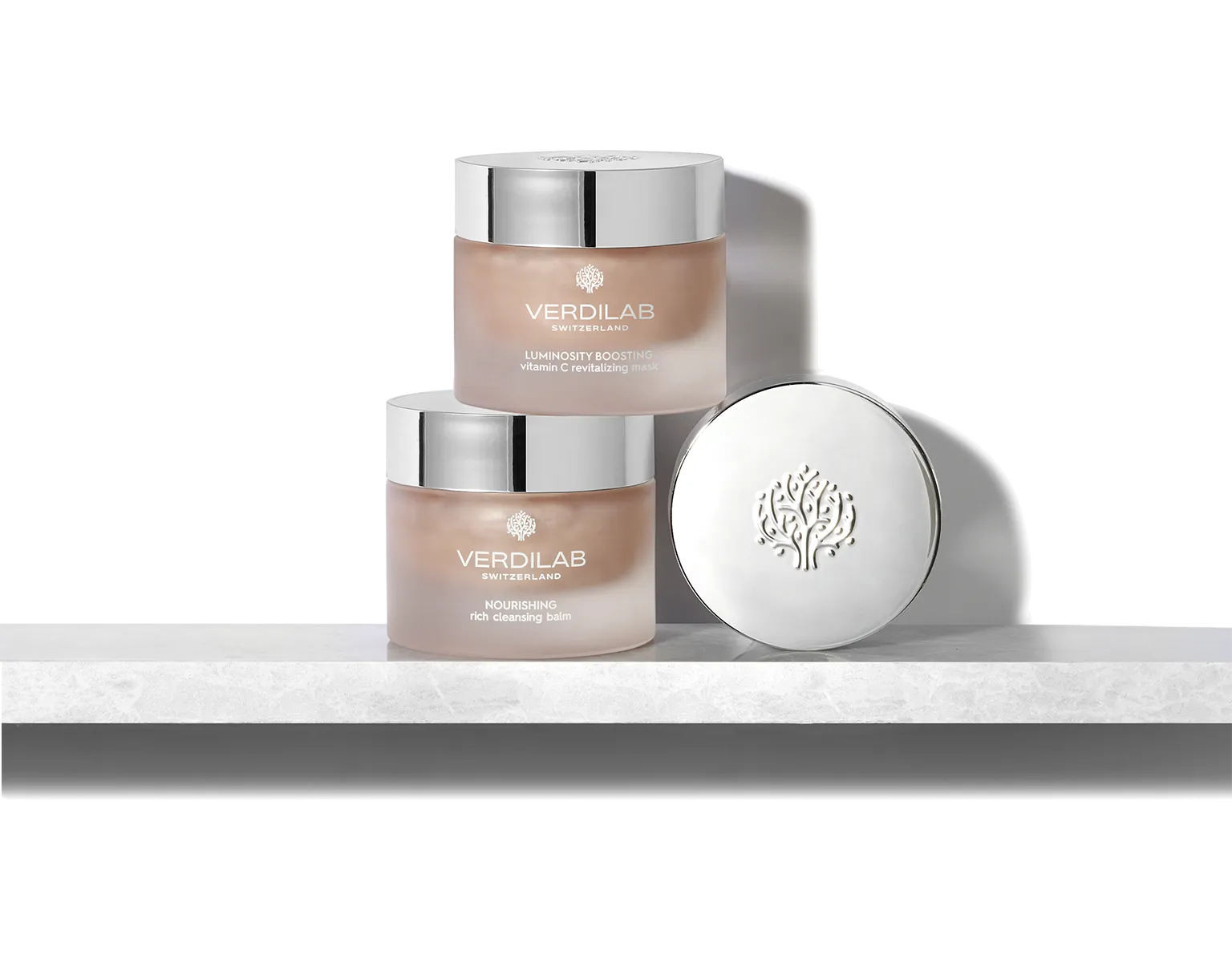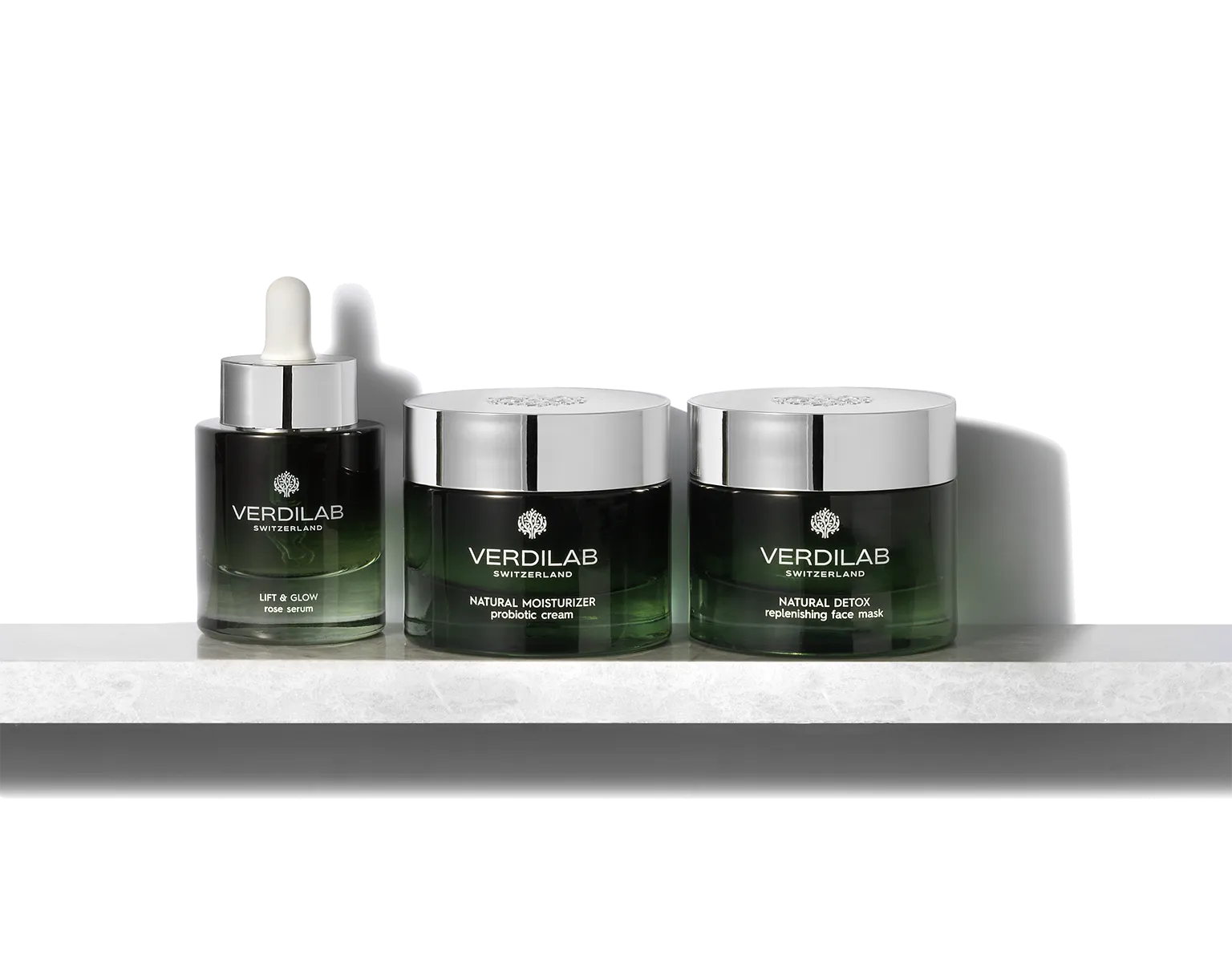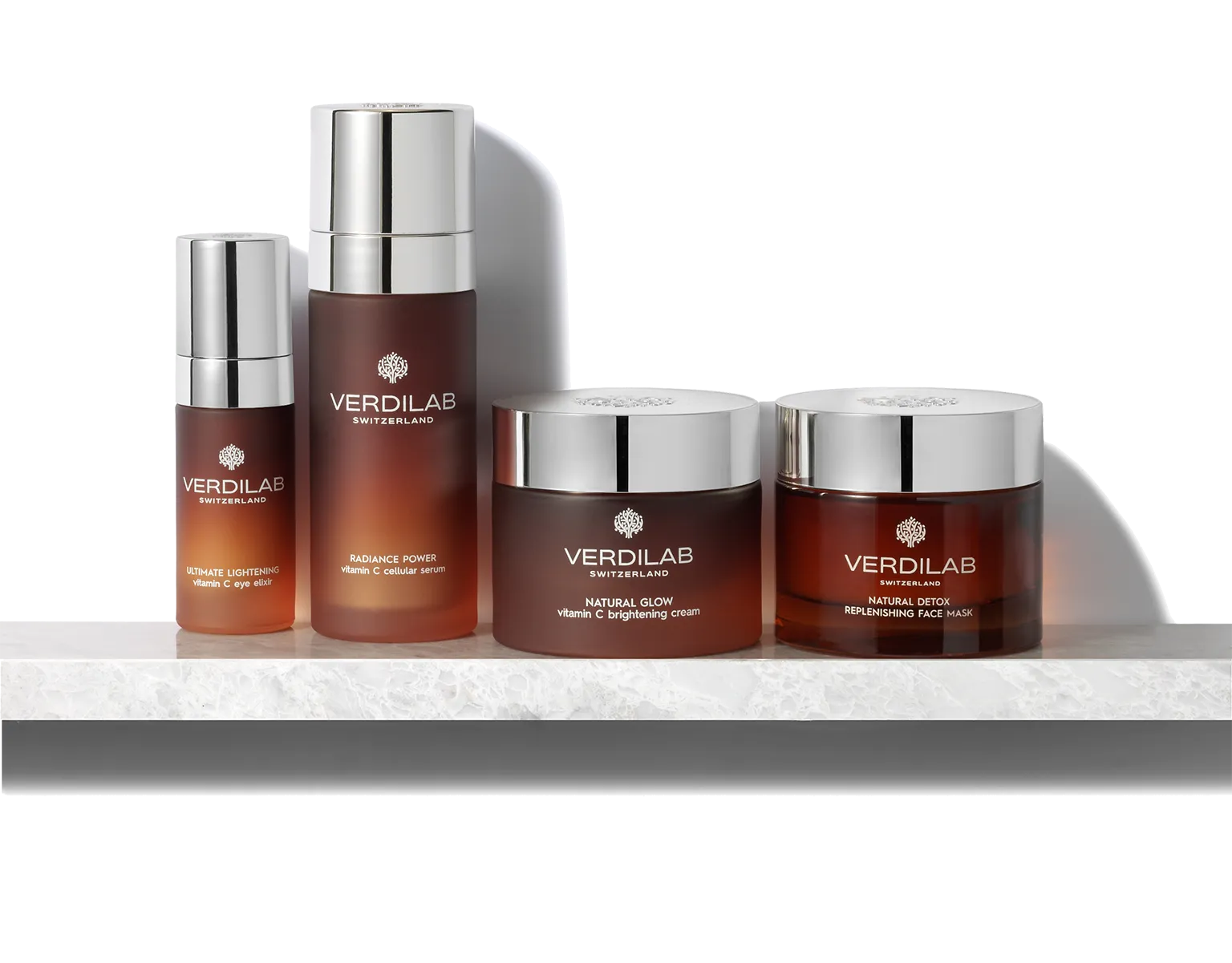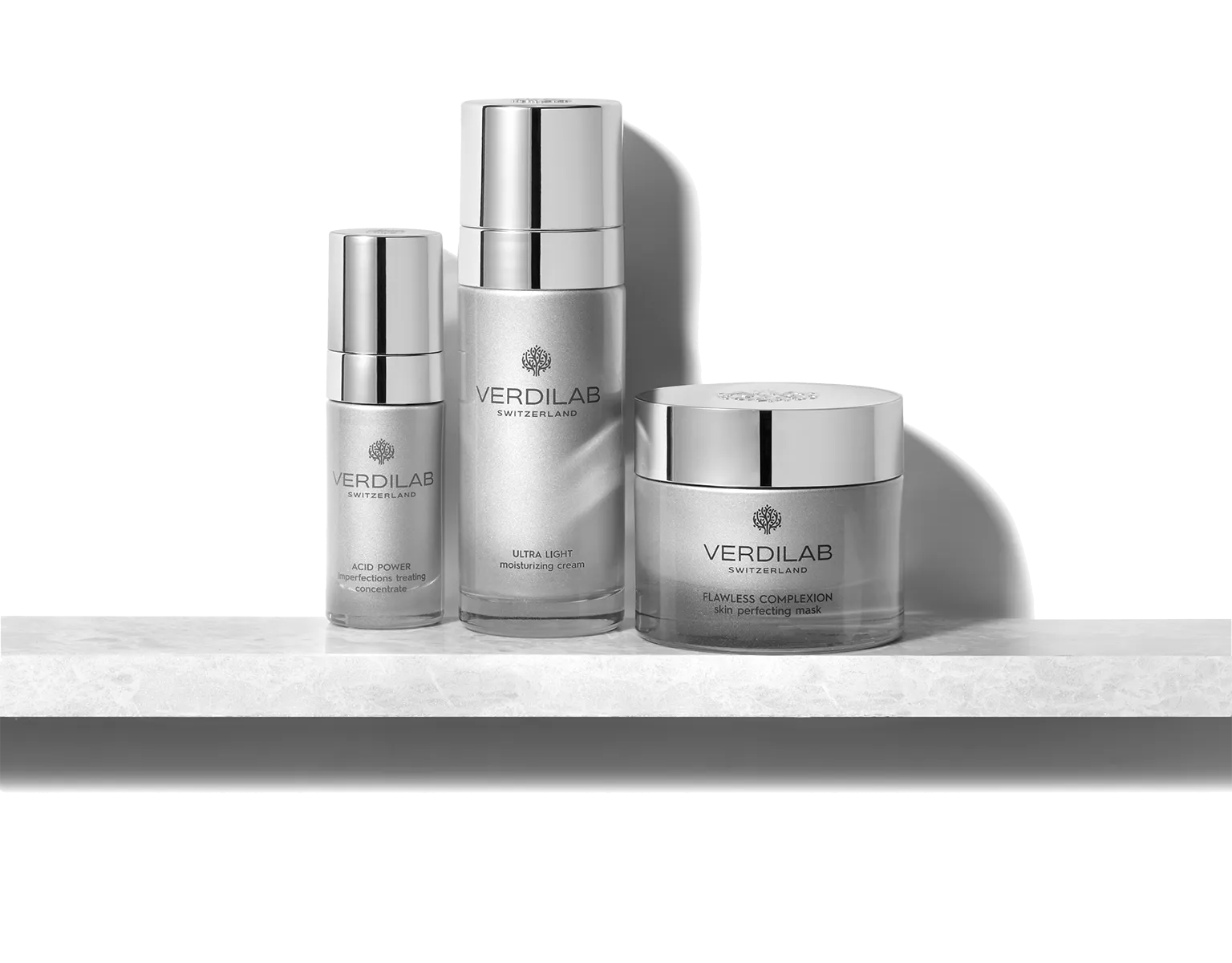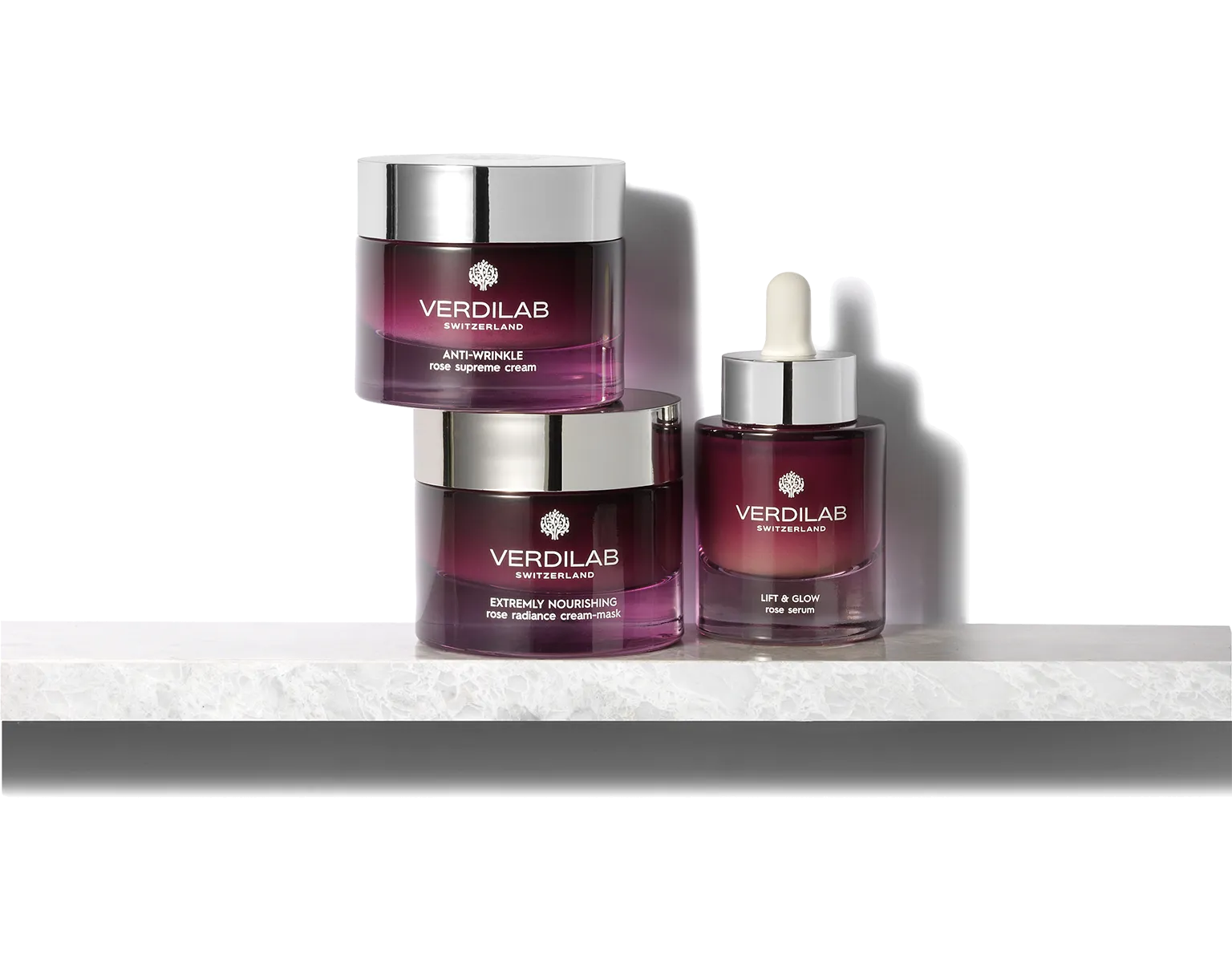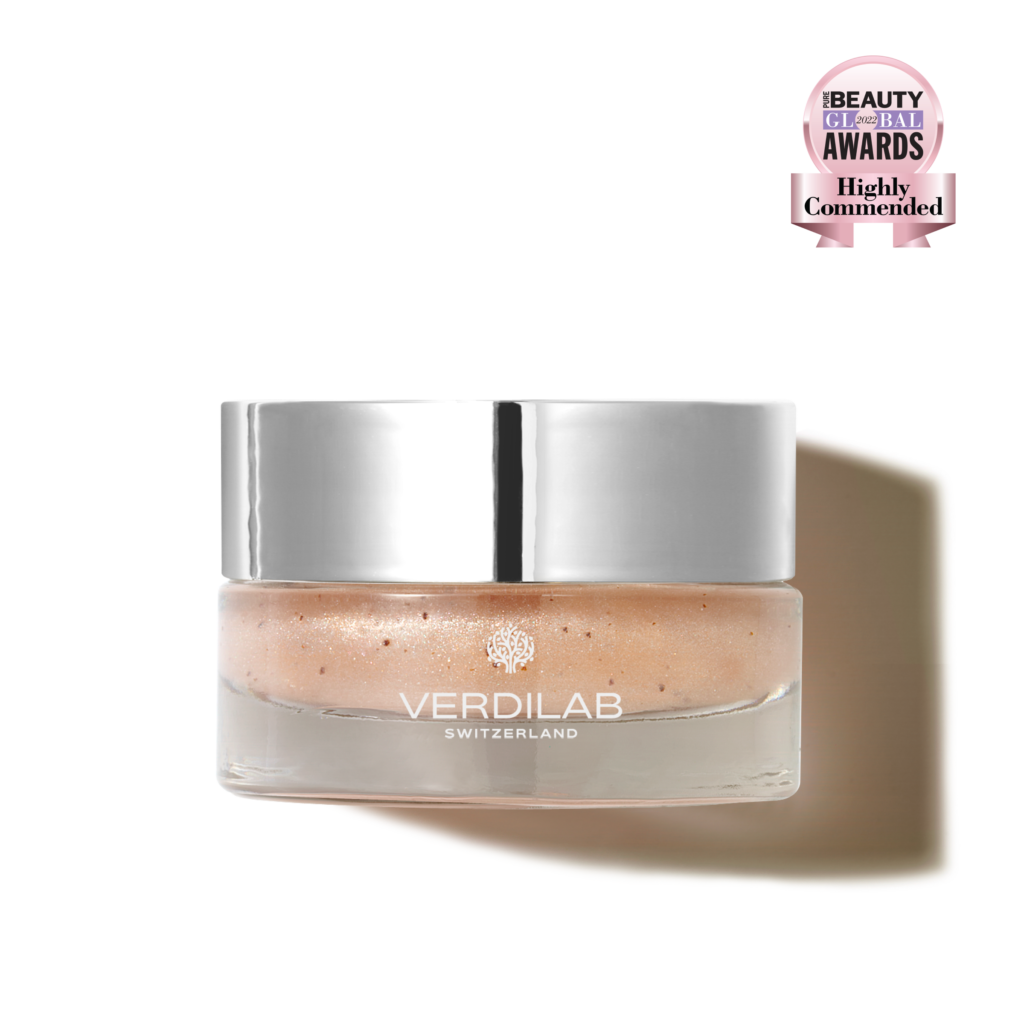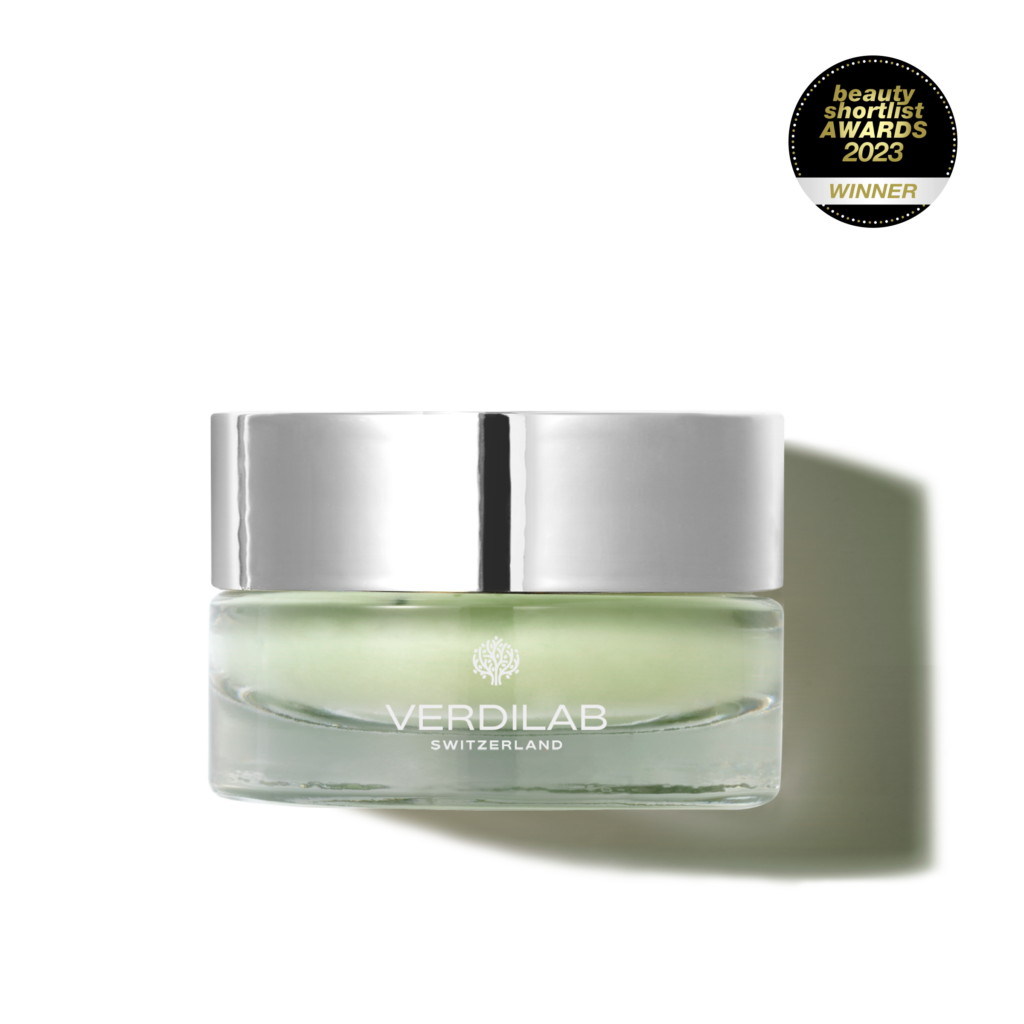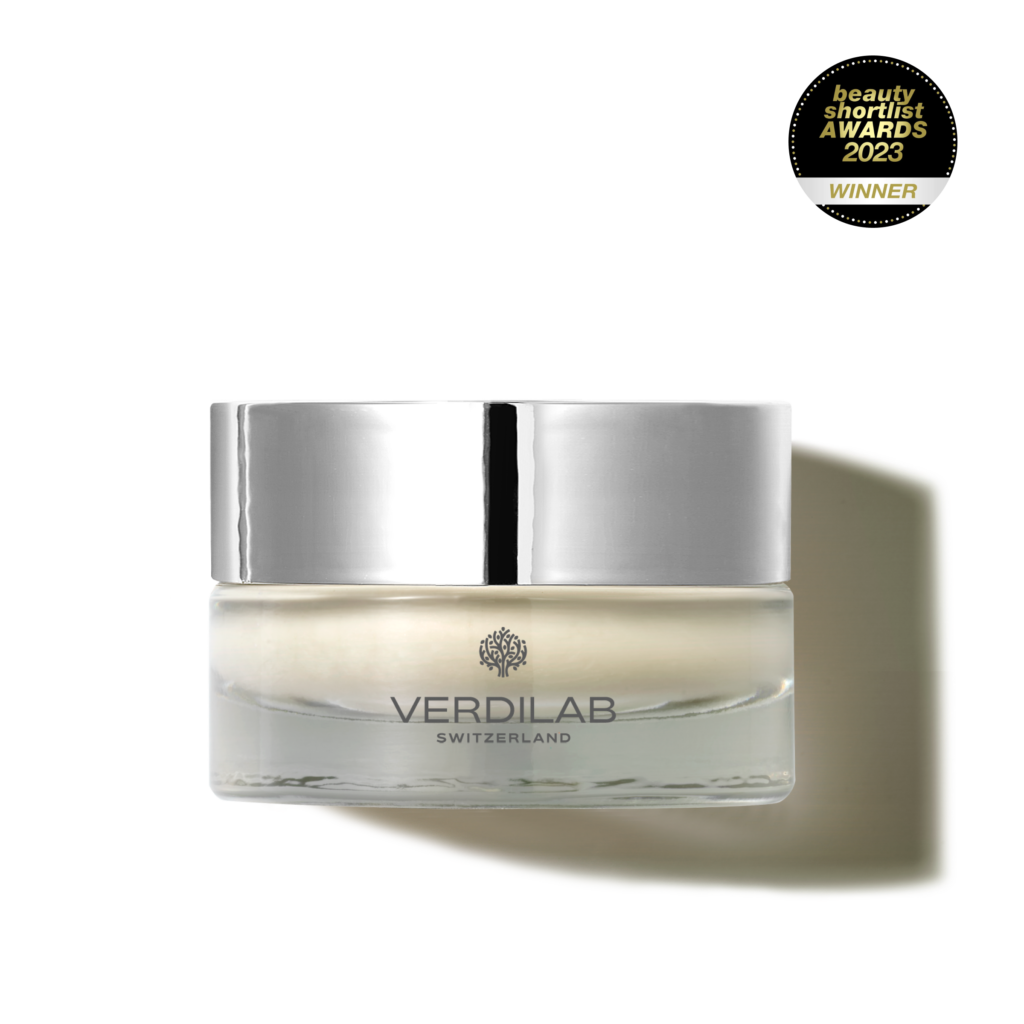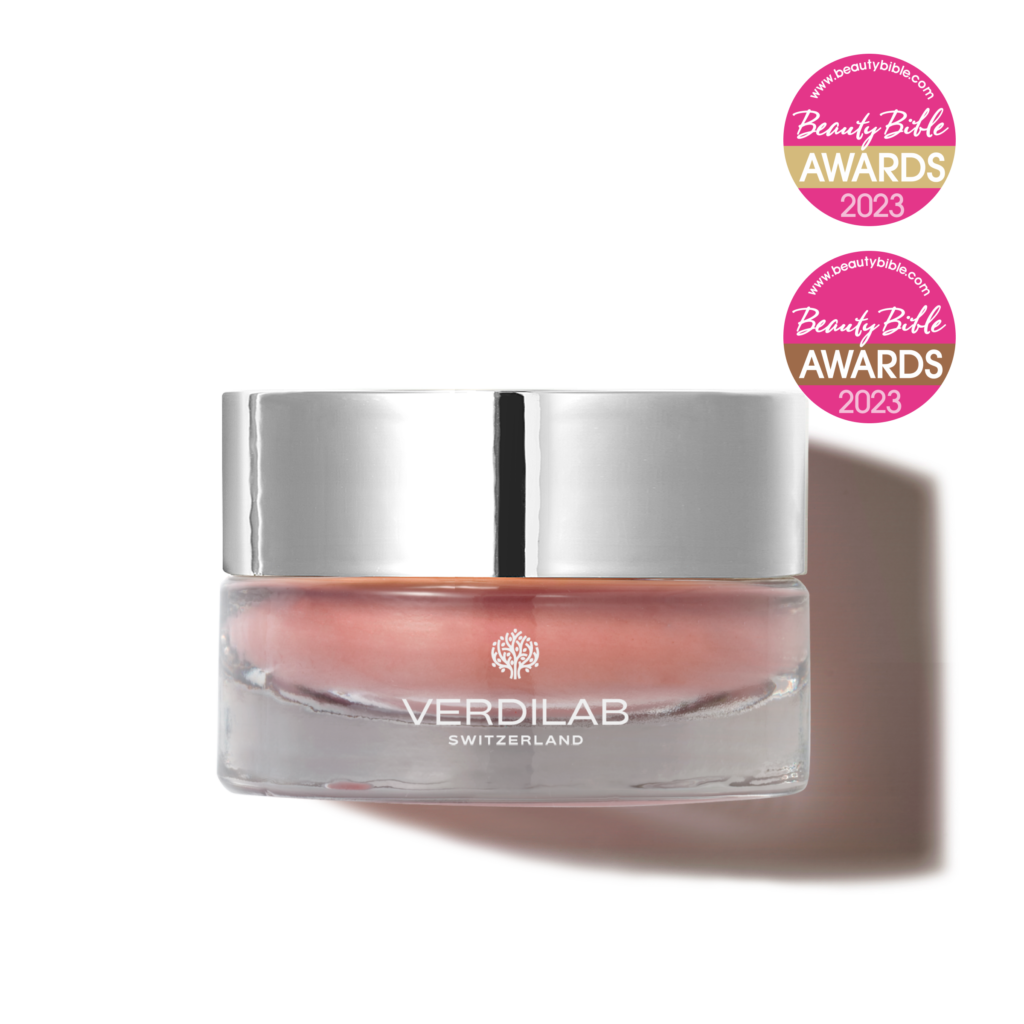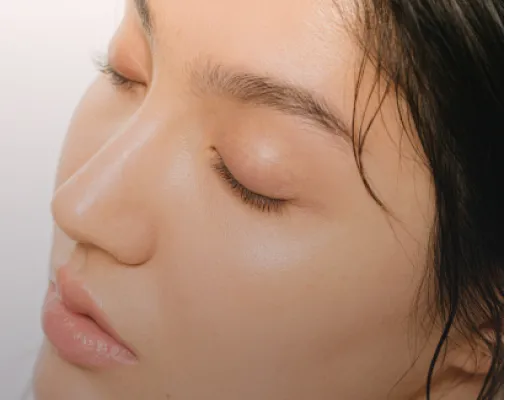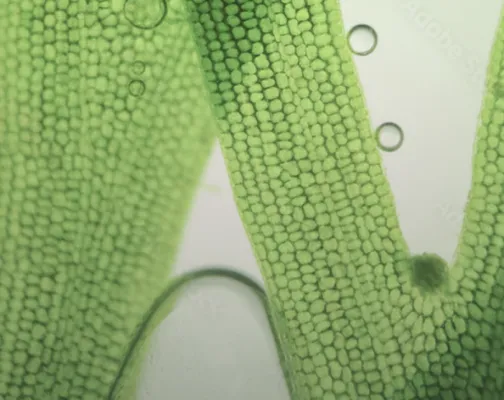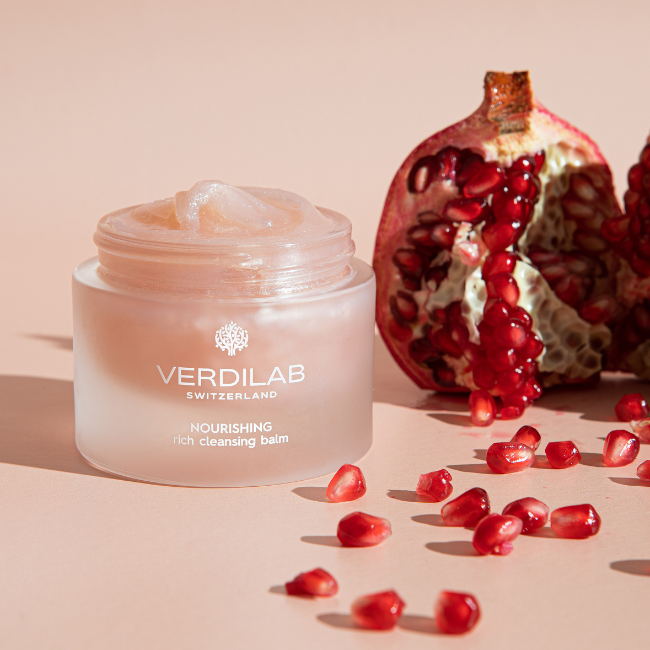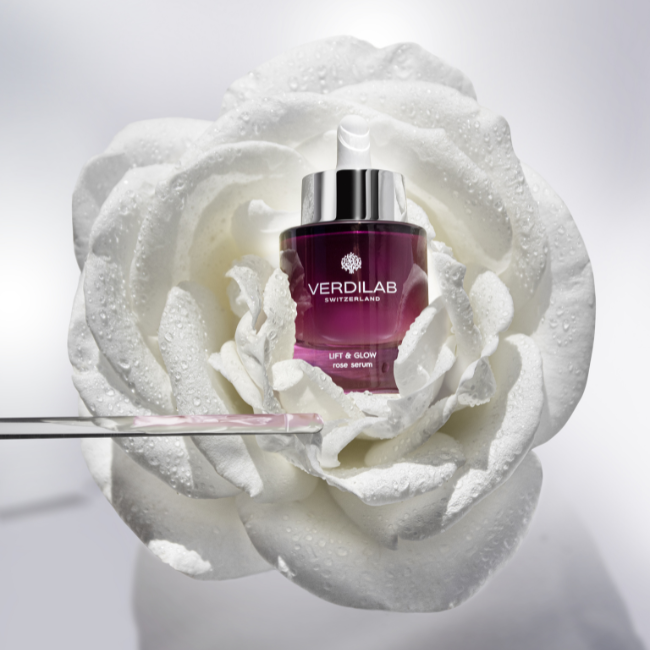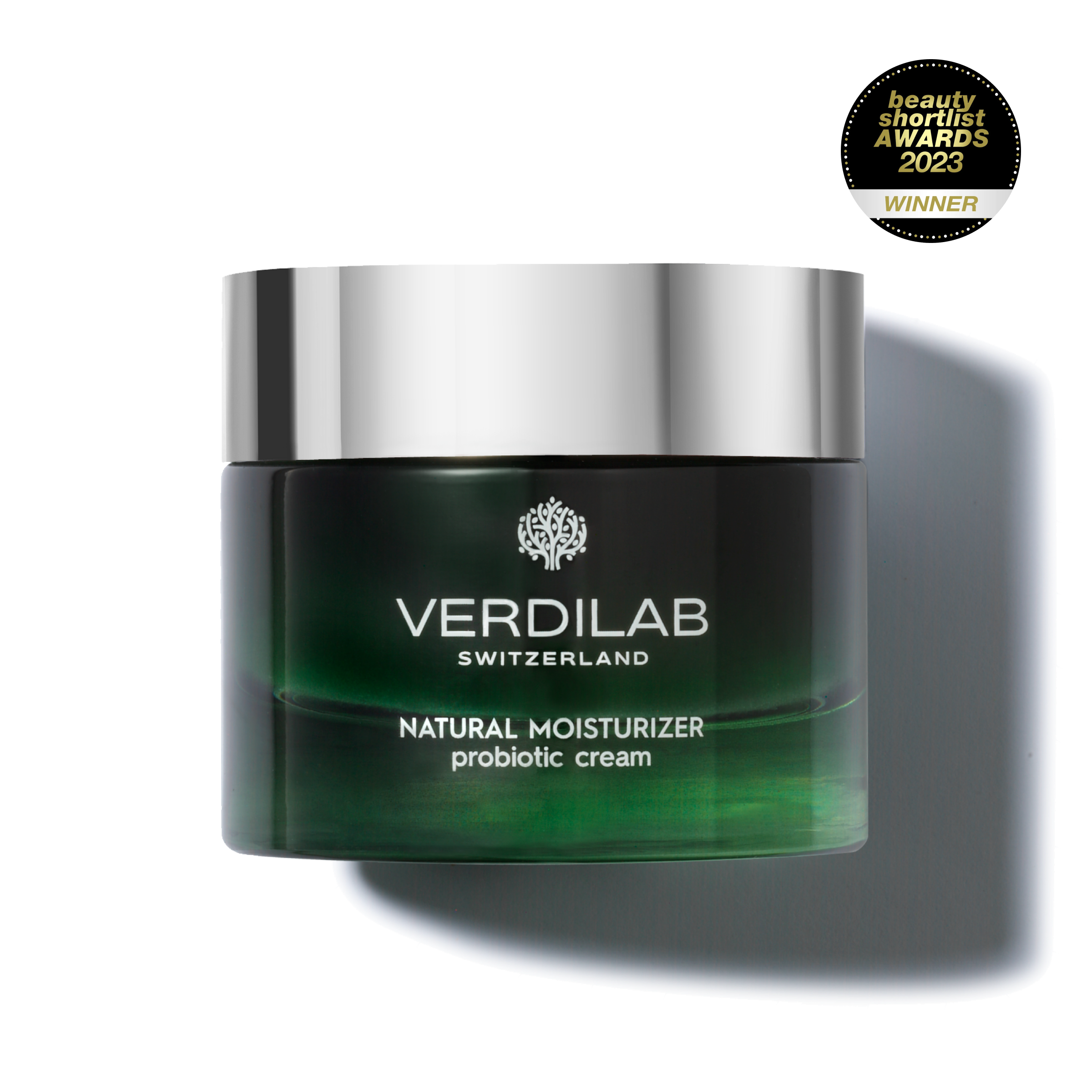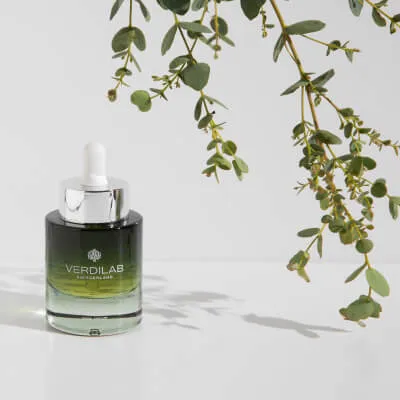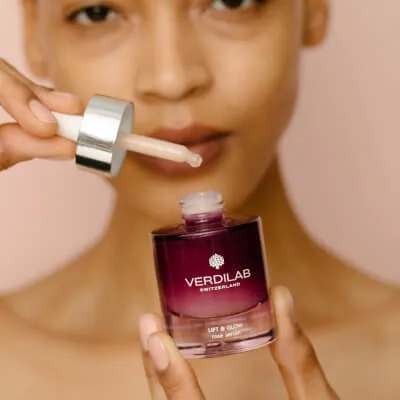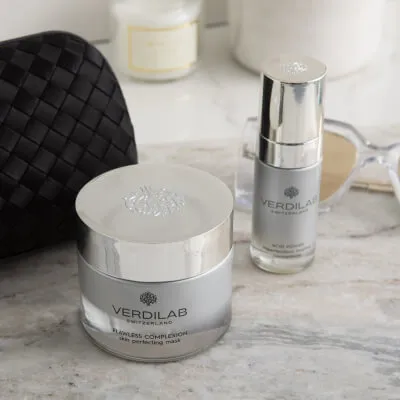- History and Definition of Probiotics
- Probiotics Bring Benefits to Your Skin
- Probiotics Increase the Skin’s Elasticity
- Probiotics Help Protect Skin Against Pollution
- Probiotics Protect the Skin from Sun Damage
- Probiotics Restore the Skin’s Balance; Reduces Sensitivity
- Probiotics Protect Helpful Bacteria
- How Probiotics are Treating Acne
- Three Main Ways You Can Take Probiotics
- Try VERDILAB’s All-natural Skincare for Healthy, Radiant Skin
The word probiotics is a term you may have heard before, usually in the context of them being good for managing the equilibrium in your gut. You can establish this equilibrium by eating yogurt or eating or drinking pickled foods and beverages like kimchee or kombucha. However, probiotics are good for you in other areas of your body, including your skin. So why are probiotics good for your skin? You may be wondering to yourself if you are new to the subject. Of course, that’s a valid question that deserves an answer, so let’s explain that a little before we dive into the thick of things.
The answer: Through extensive research, scientists have determined that probiotics are beneficial for your skin because they restore its pH balance, slow aging and avoid breakouts (more on that good stuff later). Some research even suggests that probiotics could help prevent skin cancer through the prevention against free radical damage.
Let’s read on to discover how, exactly, probiotics are good for your skin and other fascinating facts.
History and Definition of Probiotics
The modern history of probiotics started in the early 1900s, with their discovery by Nobel laureate and Russian scientist Elie Metchnikoff, who discovered them while researching at the Pasteur Institute in Paris. Nevertheless, the history of probiotics is as old as human history,as these tiny organisms are natural byproducts that are produced when food is fermented.
Probiotics live naturally in the body, and they are composed of “good” or “helpful” live bacteria or yeasts. In addition, scientists only declare that bacteria are good or helpful when proven to benefit human health. We rely on them to digest food in the alimentary canal, wage war on harmful bacteria and regulate our bodily functions. Probiotics can be found in many parts of the body, and they are particularly abundant in the digestive system.
The bacterial community in the human body is called the microbiome, and no two are alike. Our microbial cells fight inflammation and ward off disease, but they are killed by harmful bacteria when we take antibiotics. Replenishing our probiotics can be accomplished by taking supplements or eating a diet rich in fiber. Medical conditions that can be prevented or improved by probiotics include:
- Constipation
- Diarrhea
- Eczema
- Gum disease
- Inflammatory bowel disease
- Irritable bowel syndrome
- Lactose intolerance
- Upper respiratory infections
- Urinary tract infections
- Yeast infections
Probiotics Bring Benefits to Your Skin
The skin is the largest organ in the human body and serves as a barrier between the cells that keep us alive and all of the things in the world that could do us harm. The skin is constantly exposed to stresses ranging from temperature fluctuations to harsh chemicals, and it takes the lion’s share of the punishment when we trip and fall. Scientists have long known that probiotics help the skin to resist pathogens and minimize inflammation, and recent research has unveiled that these microscopic organisms can do much, much more.
Probiotics Assist with Many Skin Conditions
Skin conditions like eczema, rosacea and acne have traditionally been treated with antibiotics and special prescription creams and gels, but this approach has a few problems.
Many people find antibiotic pills hard to swallow and stop taking them as soon as their condition improves, which can cause even more severe issues down the line. Antibiotics also have side effects like nausea and dizziness, and they kill helpful bacteria in the gut. In the case of rosacea, gels and creams only work for 12 hours, and the redness and bumps return when you stop using them.
Researchers have discovered that probiotics taken orally can treat many common skin ailments without these drawbacks, and applying them topically can work even better. In vitro testing suggests that probiotics could even regulate and limit the production of cancer cells.
Probiotics Stop the Bacteria that Causes Inflammation
Many of the foods we love increase the amount of oil our skin produces, leading to clogged pores and breakouts. Exfoliating regularly and using the proper cleansing regimen can counter this, but probiotics can also help by killing the harmful bacteria that cause inflammation.
They can also help avoid breakouts by strengthening the skin’s moisture barrier, protecting us from environmental stresses.
Scientific research of subjects’ skin microbiome before and after four weeks of the application of VERDILAB’s NATURAL MOISTURIZER Probiotic Cream and NATURAL DETOX replenishing face mask proved their protective effect on the human skin. It resulted in a proper amount of positive microorganisms present on the skin, reducing the presence of adverse microorganisms such as Citrobacter koseri, Bacillus spp., Enterococcus spp., Alcaligenes spp., Pantoea spp. and Staphylococcus aureus.
Will Probiotic Skincare Products Help Stop Acne?
Most acne ointments are designed to address inflammation and improve skin hydration, which are things probiotics can do without any troubling side effects. In addition, laboratory tests have revealed that probiotics produce antibacterial proteins that inhibit p. acnes, a harmful bacteria that causes acne.
Applying them topically has been shown to increase the skin’s antimicrobial properties significantly, and during one study conducted in 2007, researchers noticed that applying probiotics directly onto the skin for two months reduced acneiform pustules and papules by 89%.
Probiotics Increase the Skin’s Elasticity
Harsh weather, inadequate skin care and lifestyle choices like smoking can all give us wrinkles and make us look older than we really are, but nothing does as much damage as free radicals. These are unstable atoms that can wreak havoc on our cells, and they are what makes our hair turn gray and our skin to age.
Our bodies produce them naturally, and exposure to pollutants, toxic chemicals, smoking and eating some foods can cause us to create even more. However, in vivo and in vitro studies suggest that probiotics could stop visible signs of aging, such as fine lines and wrinkles, by improving the skin’s elasticity.
Foods high in probiotics like yogurt or probiotic supplements or creams may minimize free radical scavenging, prevent oxidative damage and boost natural antioxidative enzymes.
Results of VERDILAB’s scientific research on antiradical activity of NATURAL MOISTURIZER Probiotic Cream show that this cream provides a very high value of the antiradical activity, neutralizing 98,26% of free radicals in just one hour.
VERDILAB’s clinical study shows that the combined use of NATURAL MOISTURIZER Probiotic Cream and NATURAL DETOX Replenishing Face Mask can increase skin elasticity levels by up to +44% in as little as three weeks.
Probiotics Help Protect Skin Against Pollution
We all want to keep our bodies safe from exposure to environmental toxins, and probiotics can help. Toxic chemicals in the air we breathe cause oxidative damage that damages skin cells and frees up free radicals that create more damage. This onslaught further weakens the protective barrier of the skin and makes it more vulnerable to infection by harmful bacteria.
VERDILAB’s NATURAL MOISTURIZER Probiotic Cream is a topical probiotic that works to protect your skin cells against all types of pollution. This moisturizer works by supporting the healthy balance of your skin microbiome and acts as a protective biometric shield that guards your skin against pollutants.
It also visibly elevates cell renewal and moisturizes skin perfectly, preventing the formation of facial lines and immediately delivering feelings of comfort. VERDILAB’s NATURAL MOISTURIZER also leaves you with a complexion that is revitalized and plumped.
Probiotics Help Calm Inflammatory Skin Conditions
The good bacteria in our bodies provide us with our primary defense against inflammation. They help to maintain the skin’s pH and moisture levels, and they strengthen the barrier that keeps out harmful environmental elements.
That is why probiotics are becoming a safe and common form of treatment for inflammatory skin disorders like eczema. Scientists do not yet fully understand the battle between good and harmful bacteria raging on our skin, but they have concluded that probiotics are a powerful weapon against inflammation.
Probiotics Protect the Skin from Sun Damage
The sun’s ultraviolet rays damage our DNA and cause skin cancer, and they can penetrate through windows and some types of clothing. Spending our lives hiding from the sun is not a solution, so we need a better way to protect ourselves.
A combination of sunscreens and common-sense precautions is the best approach, but a daily regimen with probiotics provides even more protection. Researchers have discovered that probiotics taken orally can reverse the harmful effects of UV rays, and topical creams containing helpful bacteria or the substances healthy bacteria need to thrive could be even more effective.
Probiotics Restore the Skin’s Balance; Reduces Sensitivity
Probiotics work with receptors in the skin to regulate the immune response, which helps to soothe inflamed skin. Some of the products we use to wash and cleanse the skin interfere with the delicate bacterial ecosystem that keeps us healthy, but probiotics can restore balance and reduce dryness, redness and sensitivity.
Sensitive skin is more vulnerable and takes longer to repair itself, turning even minor irritations into prolonged ordeals. Probiotics speed up healing times and boost the skin’s defenses by repairing, rebuilding and strengthening its protective barrier.
Probiotics Improve Your Skin’s Hydration Levels
Strengthening the skin’s natural barrier also improves hydration by reducing water loss significantly. Another way probiotics keep the skin hydrated and looking healthy is by fighting the harmful bacteria that cause the skin to become dry and irritated in the first place.
When scientists studied the link between probiotics and skin hydration in 2016, they found that people with dry skin who applied a probiotic cream for four weeks had more effective skin barriers, less water loss and higher moisture levels.
VERDILAB’s clinical study on subjects aged 25-60 showed that the Natural Moisturizer Probiotic Cream increases the level of skin hydration up to 96%*** in just one hour after application. It also keeps the long term hydration effect at an average level of +79% after 12h from a single application.
Probiotics Protect Helpful Bacteria
Probiotics are the good guys in a war between helpful and harmful bacteria being waged in every human body. Harmful bacteria damage our cells, accelerate aging, and cause many deadly diseases, so it only makes sense to give the organisms doing battle with them a fighting chance.
Adding probiotics to your daily routine will always have a positive impact, but it is of particular importance if you have recently taken antibiotics. These drugs are widely prescribed because they can prevent infections, but they kill good bacteria as well as bad ones, resulting in changes to the microflora in your gut. This change can lead to diarrhea, nausea, and other GI issues until the gut gets back in balance.
How Probiotics are Treating Acne
The link between diet and acne is well established, and hundreds of diets have been touted as a possible treatment. Scientists now believe that diets low in fiber are the main culprit as they starve our helpful bacteria and allow harmful bacteria to thrive. This effect causes inflammation in the digestive tract that can spill over into the bloodstream and reach the skin. There are several ways that probiotics can help to prevent this from happening.
Taking oral probiotic supplements attacks the problem at its source by sending out good bacteria reinforcements and applying probiotic creams and masks to prevent harmful toxins from reaching the skin. Probiotics have also been found to stimulate the skin’s ability to produce ceramides, which are lipids that hold moisture and thwart harmful bacteria.
This approach is so effective that many leading dermatologists now believe that probiotics should replace antibiotics as the primary treatment for acne.
Is Taking Probiotics Every Day Bad for You?
During the pioneering stages of probiotics in the early 1900s, researchers noticed that people who eat a lot of yogurt tend to live longer. We now know a lot more about probiotics, and we have learned that more is better.
It is often said that we can have too much of a good thing, but that is rarely the case with probiotics. Probiotic supplements are safe to take every day, and topical probiotic products can be applied in the morning and night.
Three Main Ways You Can Take Probiotics
There are varying ways of taking probiotics, but the main ways of taking them are topically, orally or by capsule or pill. Taking capsules and pills are technically done orally too, but we are breaking them out separately since their effectiveness is quite different.
One popular oral form of probiotic is a powder that you add to water or your favorite drink, but ingesting it through your food is just as effective, if not more so. Topical probiotics work well too, as do capsules but to a lesser extent.
What follows is more information about the three most commonly used probiotics.
1. Topical Probiotic Creams
Similar to how probiotics function to prevent and treat problems with your stomach, topical probiotics are proven to have a soothing effect on your skin by stimulating surges of helpful bacteria that keep skin cells thriving.
You can buy topical probiotics in face creams and masks. These products typically contain the most beneficial strains of bacteria because they stay on your skin for hours at a time; they also use potent dosages relative to other forms of application.
Topical probiotics work best when you apply them twice daily. Therefore, a regimen you can try is putting them on early in the morning and right before you go to bed. It’s also best to put them on after washing your face.
2. Oral Probiotics
There are many foods that contain probiotics like yogurt, kefir, sauerkraut and some types of cheeses like gouda, mozzarella and cottage cheese. The key is to look for live and active cultures, as these aid digestion and promote a healthy gut.
Probiotic liquids can also be added to smoothies or shakes for an easy way to get them into the diet quickly and easily every day. Also, probiotics can be taken orally in pill form, which we’ll touch on next.
3. Probiotic Capsules
Probiotic capsules or pills are convenient for your lifestyle or travels, but they don’t work as well because the enzymes in your stomach kill most of them before they can get into your bloodstream. The strains that can be found in capsules typically have been chosen for their ability to survive the digestion process and make it into your gut alive.
You also need much higher doses than when taken orally or applied topically, about 500 million to one billion bacteria.
Try VERDILAB’s All-natural Skincare for Healthy, Radiant Skin
We hope you enjoyed our article about how probiotics can give you healthy, radiant skin. If you are interested in finding out the ways Verdilab’s clean, 100% natural cosmetics can help the health and appearance of your skin, be sure to check out our line of skincare products for your specific skin type!
